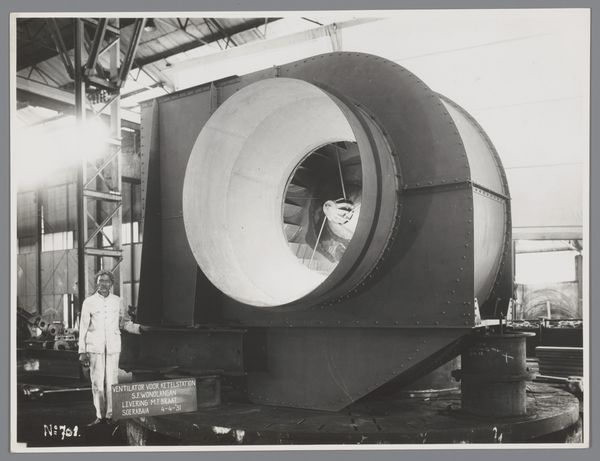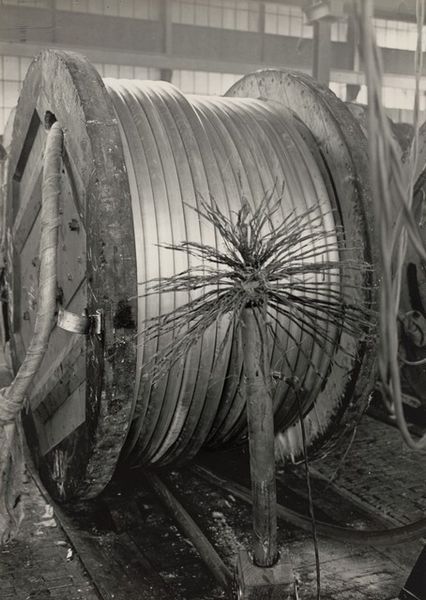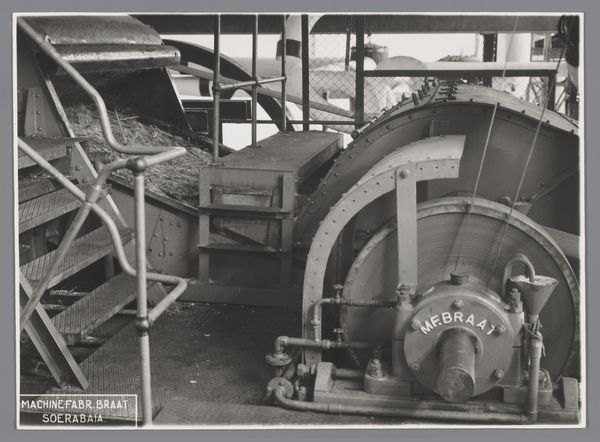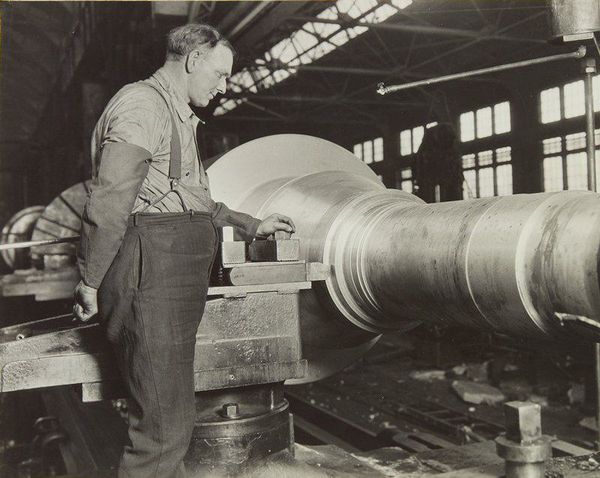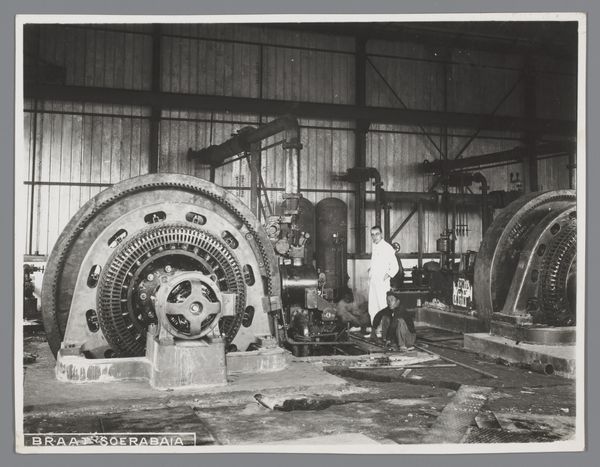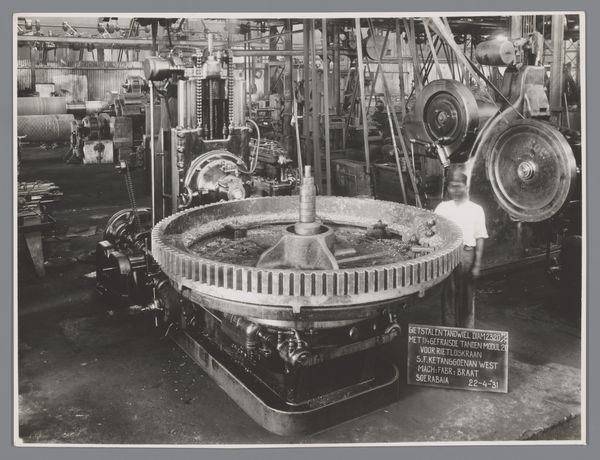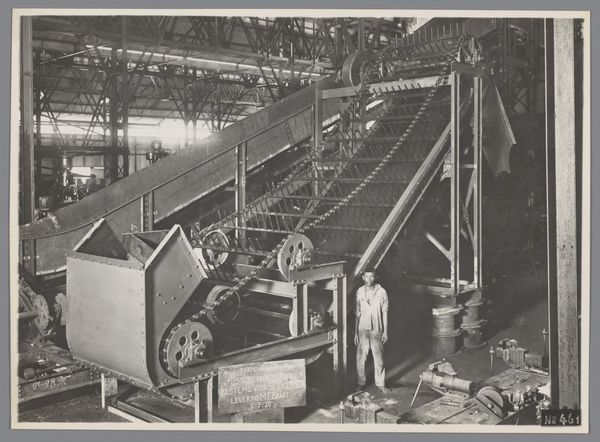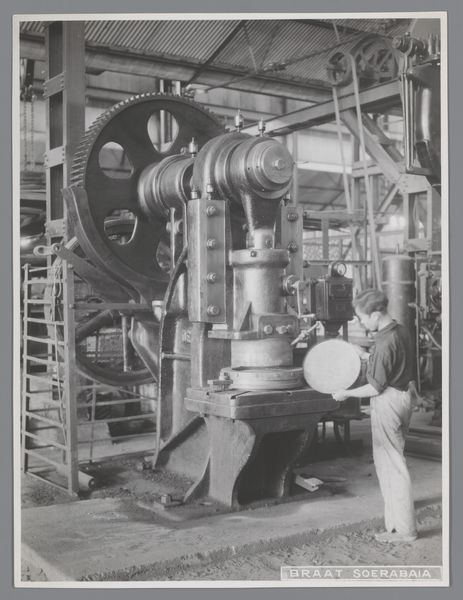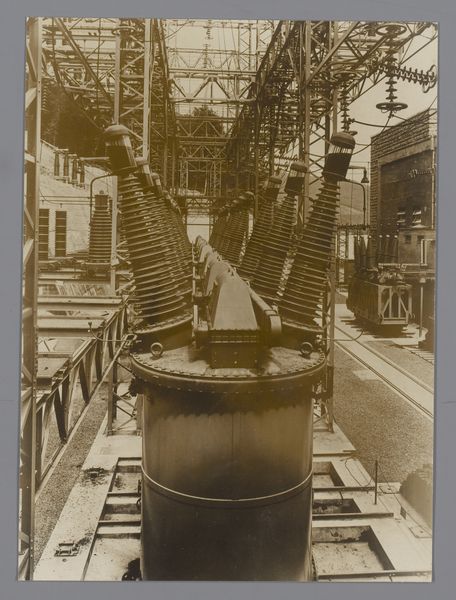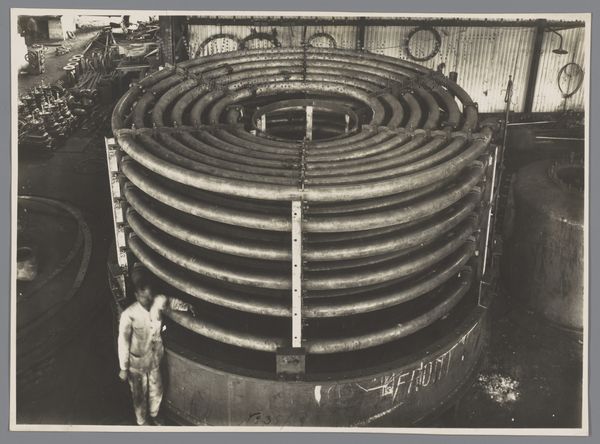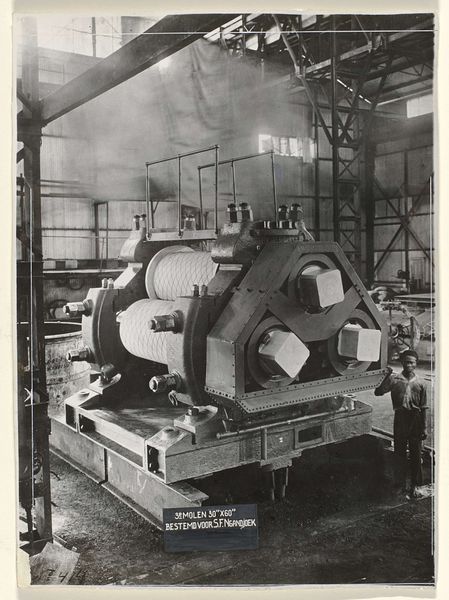
gelatin-silver-print, photography, gelatin-silver-print
#
portrait
#
gelatin-silver-print
#
photography
#
gelatin-silver-print
#
ashcan-school
#
united-states
#
realism
Dimensions: 9 9/16 x 7 9/16 in. (24.29 x 19.21 cm) (image)10 x 8 1/16 in. (25.4 x 20.48 cm) (sheet)
Copyright: No Copyright - United States
Editor: Here we have Lewis Hine's "Heart of the Turbine," a gelatin silver print from 1930, residing at the Minneapolis Institute of Art. What strikes me is the contrast: this immense machine dwarfs the worker, yet he seems so central to its existence. What historical context informs your interpretation of this image? Curator: That’s a great observation. Hine, who documented child labor extensively, shifted his focus to celebrate the American worker during this era. Consider the Ashcan School influence, depicting urban life, but instead of gritty poverty, Hine shows us the nobility of labor, even amidst the dehumanizing scale of industrialization. Notice the Westinghouse label; it's an assertion of American industrial prowess. Editor: So, this isn’t just about the worker, but also about promoting American industry? Curator: Precisely! It’s carefully staged propaganda. The worker is not exploited here; he’s framed as integral to progress, skillfully merging with the machine's aesthetic. He becomes a symbol. Think about the power dynamics at play—who commissioned this photograph, and for what purpose? Editor: It’s fascinating how the photograph reframes a potentially bleak reality into a narrative of national pride and individual worth, all tightly interwoven. I never thought of documentary photography being used this way, or as 'staged'. Curator: And that awareness—the critical assessment of how images are constructed and deployed—is essential. Now you start questioning the motivations and societal impact, looking beyond the purely aesthetic. Editor: Definitely! Thank you for making me see it with completely fresh eyes. Curator: My pleasure. Thinking about the agency of photography in constructing and shaping our historical narratives, reveals it as a far richer space.
Comments
minneapolisinstituteofart about 2 years ago
⋮
“I wanted to show the things that had to be corrected; I wanted to show the things that had to be appreciated.”—Lewis Hine Working as a photographer and inspector for the National Child Labor Committee in the early 1900s, Lewis W. Hine documented underage laborers in coal mines and cotton mills. This image of a young boy named Richard Pierce working as a messenger for the American District Telegraph Company, an affiliate of Western Union, is just one of thousands of instances of labor abuses that Hine captured over his career. By exposing the ills of immigrant and labor conditions and inspiring empathy for his subjects, Hine was able to use photography to bring about social reform. Hine’s photographs would eventually compel the U.S. Congress to pass legislation against child labor.
Join the conversation
Join millions of artists and users on Artera today and experience the ultimate creative platform.
